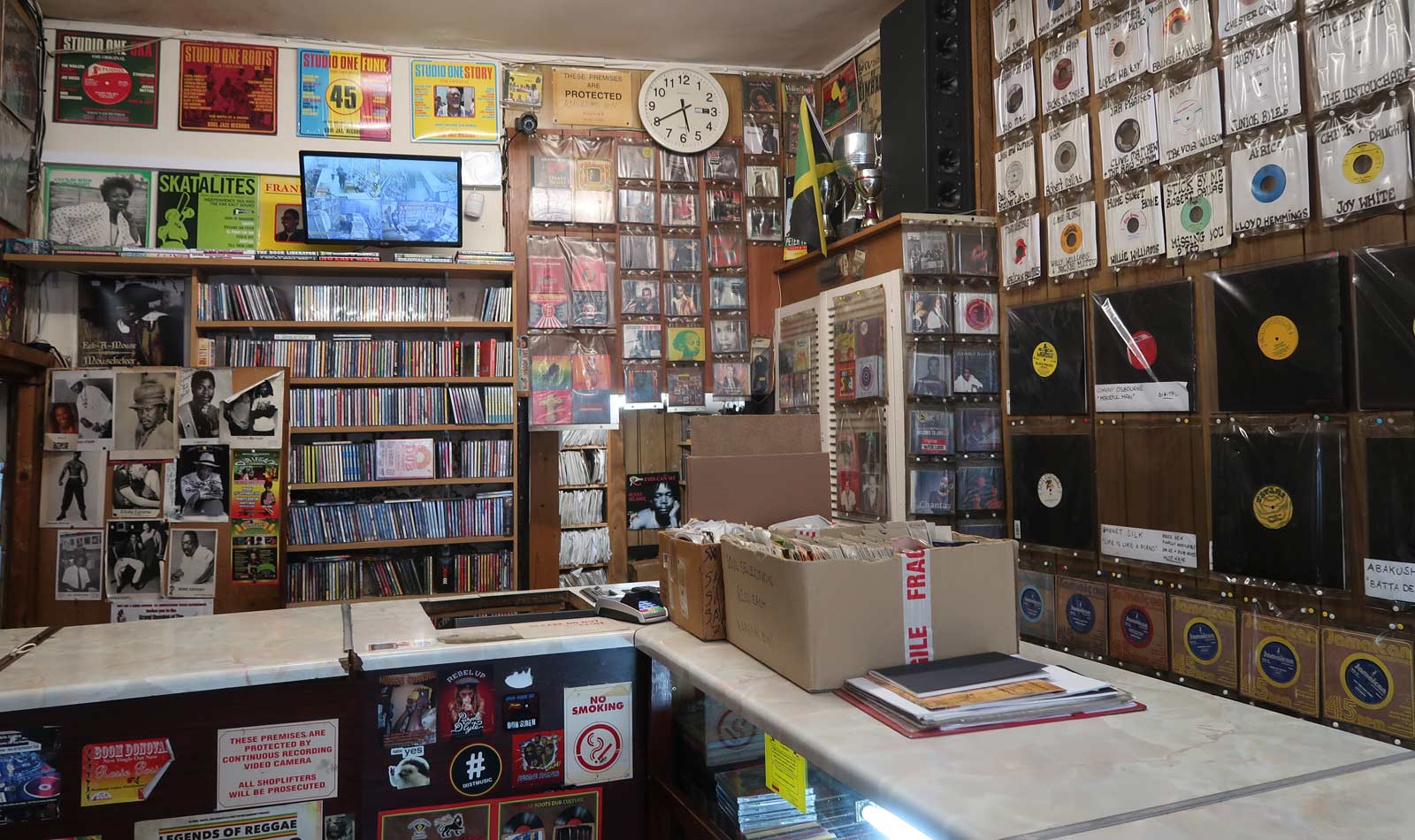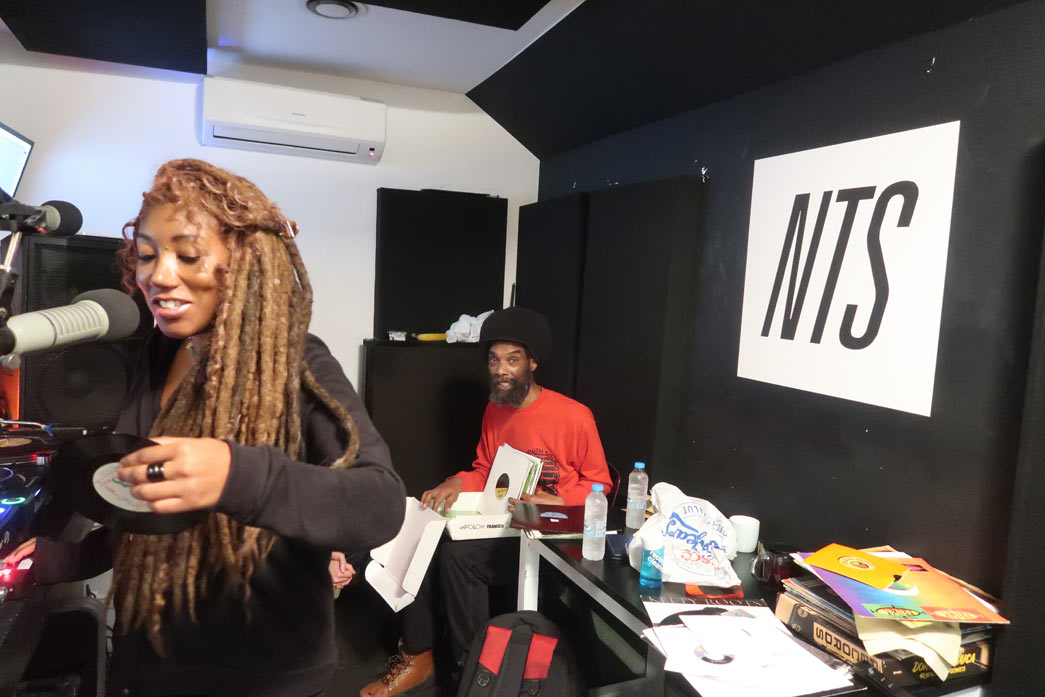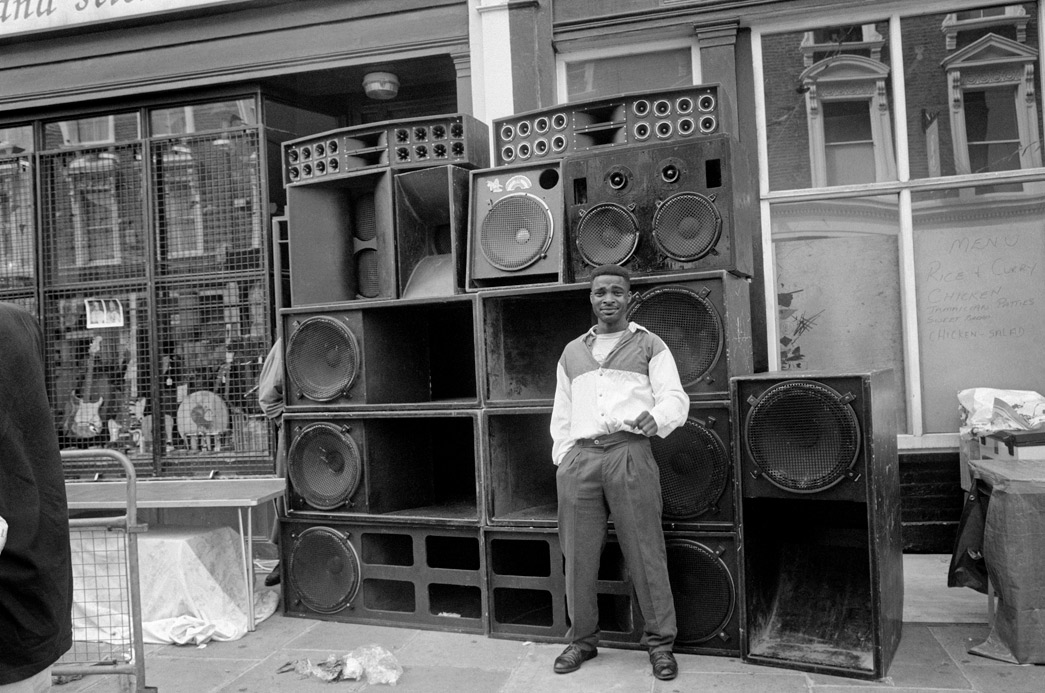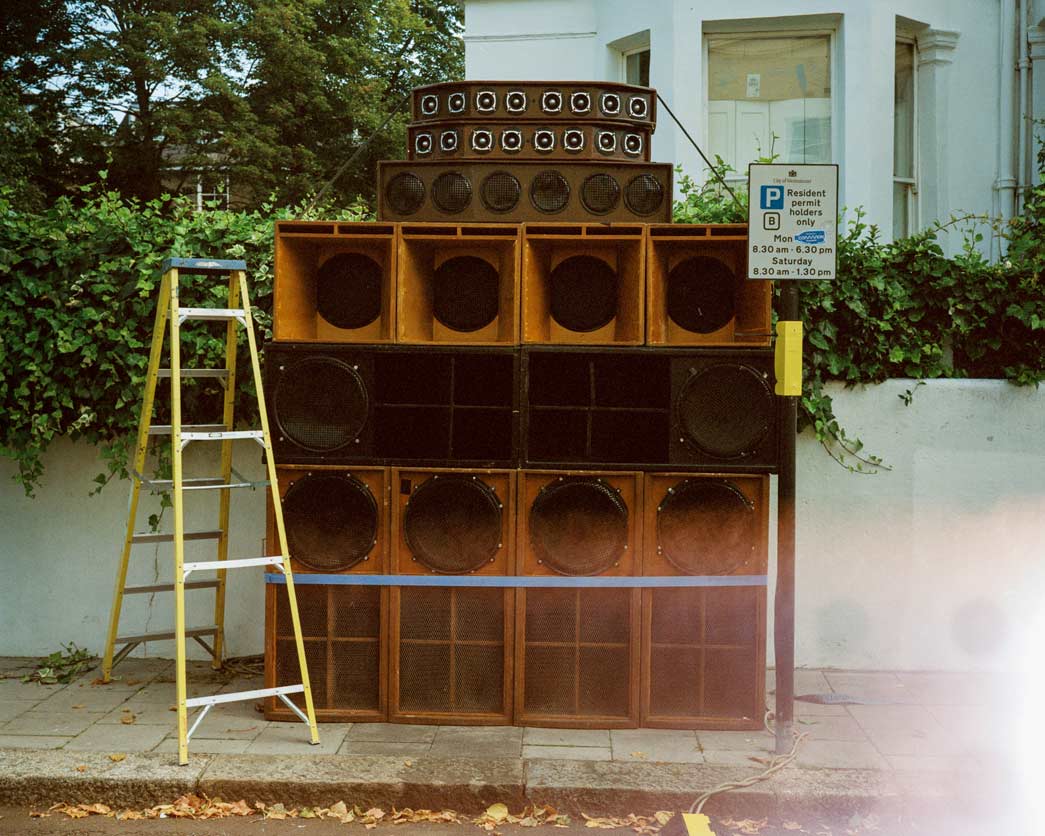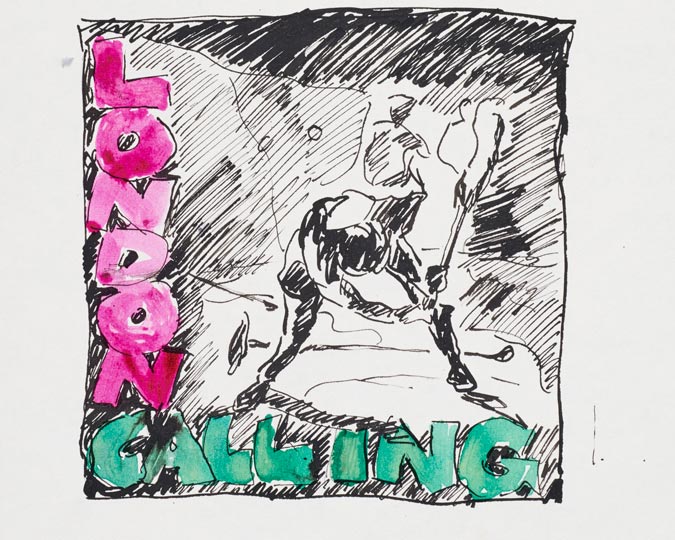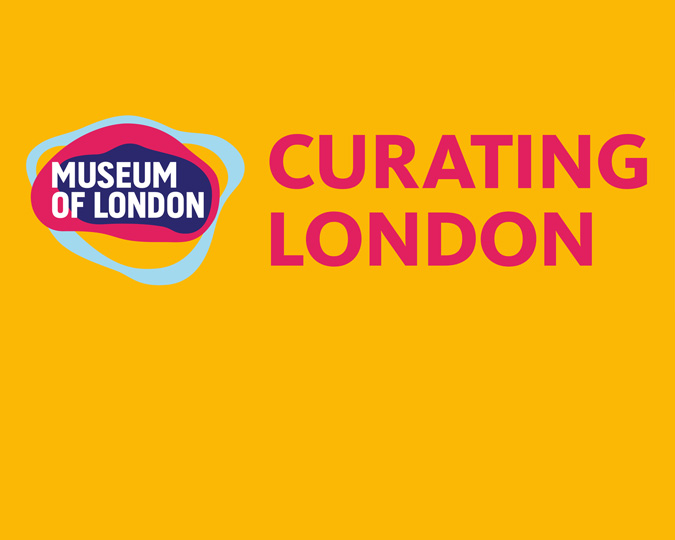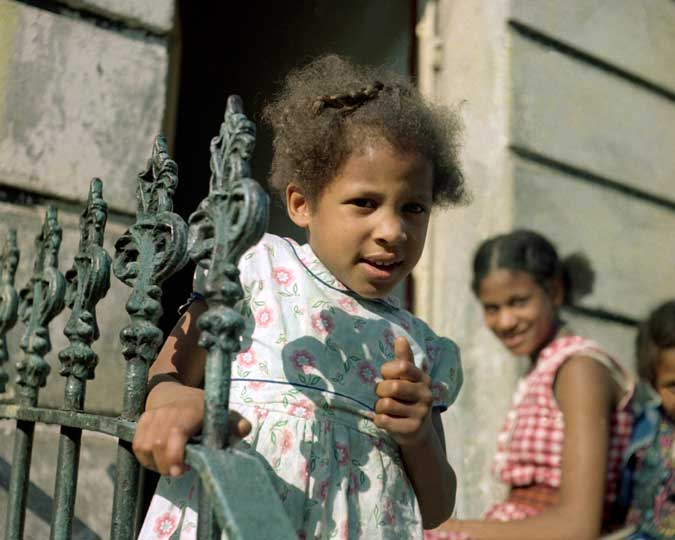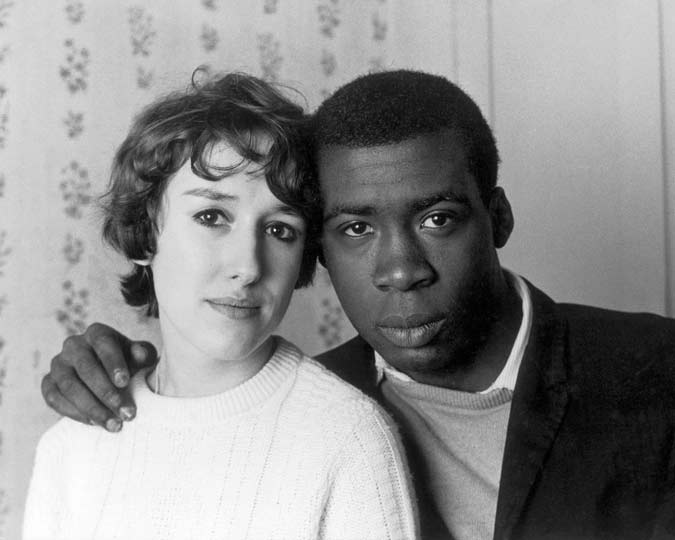We're trying to capture what living in London sounds like. Let's hear from Cedar Lewisohn, co-curator of Dub London, and how he's trying to capture a sound, a culture, and an experience.
Cedar Lewisohn: “I’m an artist, writer and curator. My work is part of Curating London, a new collecting project. Over four years, the Museum of London is heading out into the city, trying to capture what it means to live in London. We’re recording everyday life, from clothes and chat to music and food. My project covers the whole of London, researching the past and present of dub reggae music.”
What is dub reggae?
Cedar: “This is tricky to define, as lots of people, even experts, have different definitions. For me, dub reggae is a form of roots reggae music, where the recording studio becomes the instrument. It means that the producer becomes the musician.
"It’s difficult to pinpoint exactly when dub reggae emerges,
there are important moments in the 1960s and early 1970s. We’re not being purist about the subject, but taking a broad view of the
music and culture. Whether that’s dub reggae, ska, rocksteady, lovers’ rock: I’m
interested in the whole lineage of the music and the culture that surrounds it."
Why does dub matter?
"Lots of people see dub reggae music as being foundational in the invention of electronic music. So some people say that all modern dance music starts with dub, that idea of the studio being the instrument. Dub reggae also has some of the first use of repetitive beats. It’s also had a huge influence on genres such as drum 'n' bass, grime, drill music.
Even though most of this music originated in the Caribbean and Jamaica, London quickly became important to dub reggae: dub record labels were started in London, and dub music was produced in London and exported to the rest of the world."
How did you start your research?
“My family heritage is Jamaican and I’ve had a lifelong interest in roots reggae, but I’d never researched it in a professional capacity. I wanted to understand what dub music makers and fans thought about the genre, because this is contested history: there’s not one right definition of dub.
The first person I spoke to was Chris Lane from Fashion Records, a very influential label in British reggae music history. He directed me towards various record shops specialising in reggae , which you can find right across the city, from Soho to Dalston. And it was Chris who suggested I should go and speak to the owner of Supertone Records in Brixton.
“I met Wally Bryan in Supertone Records; he has proved pivotal in the research. The first thing he said was: ‘I’m not going to speak to you unless I can tell you my entire life story.’ I’ve done a series of ten interviews with him, covering his childhood in Jamaica and working with early Ska musicians such as Prince Buster, through to his arrival in the UK in the early 1960s, up to today, all through music. He was there for the birth of reggae music, to see the invention of ska, to see dub emerge. Speaking to Wally and hanging out at Supertone I realised these aren’t just record shops, they’re community hubs, and they keep community history alive.”
"There are often Caribbean takeaways nearby, so at the same time I’ve been researching the food. While I’m there, I collect fliers: these are ephemeral adverts for parties, dances, community events, even religious events. Rastafari ideology and philosophy underpins, not all, but certainly some of roots reggae music and by association dub reggae as well. There's a religious aspect to it and also a black emancipation aspect to it. I'm working with a community group called the Rastafari Movement UK to better understand that connection, and better understand the music.
"Both reggae record shops and Caribbean food shops are these rare spaces in London that are not corporate, where people can congregate. As high streets are changing across London, I think it’s important to have these very small microbusinesses that act as community spaces.”
What has collecting those fliers led you to?
I was amazed to find out that there are dub music events happening most nights of the week in London. As part of my research I’ve been to a lot of these events.”
Purely as part of your research?
“Well, I might have a little dance. It’s fun research for sure."
What have you uncovered visiting dub club nights?
“The demographic of the audience has really surprised me. It’s not just young people at these clubs, it’s a real mix of age groups. These gigs are one way that Caribbean culture is being passed between generations. There are also lots of people from outside that community- I’ve met Japanese groups, Brazilians. Dub reggae and sound system culture has fans all over the world.
“You can see that influence in the popularity of the Notting Hill Carnival: it’s the biggest street festival in Europe, full of young people finding out about their musical heritage, dancing to tunes new and old. So this year, the Curating London team headed down to Carnival. We were there to document a sound-system, Channel One.
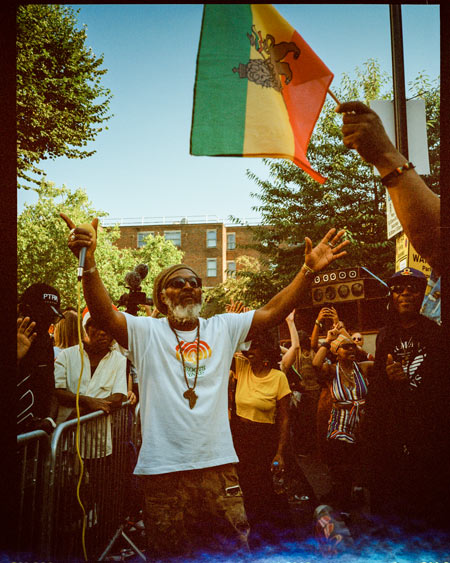
Channel One at Notting Hill Carnival
Photographer Eddie Otchere.
"Sound-systems have an entire history in themselves- they started out in the Caribbean as portable discos. they evolved into huge speaker stacks, as big as wardrobes or bigger and that culture moved to the UK with the music. These are very powerful music systems, and they need a team to run them: the DJ, the microphone operator, the engineer and a whole crew to put them together.
"We worked with Channel One, recording the music that they played through the day, not just their music but also the sound of the crowd. We commissioned photographer Eddie Otchere to document the whole day. We wanted to capture the slow build-up of the Carnival, from the early morning with no people and the sound systems being tested until you see all the people dancing and the music swelling.
"We were also able to record the 72 second silence at three o'clock, held out of respect to the people that died in the Grenfell Tower fire. All the sound systems turn off their music and it’s a very poignant moment.”
How are you putting that music in the museum?
"Dub reggae isn’t just a sound, there’s a whole culture and a history that we’re trying to record. It’s a real challenge as a curator to try and put that intangible heritage on display.
One of the events that we’re doing is a Tribute to Dread Broadcasting Corporation- one of the first black-owned pirate radio stations, that played lots of reggae and black music. Dread Broadcasting Corporation was started by a guy named Lepke, and he worked closely with Mike the Bike and a very influential female reggae DJ, Ranking Miss P. We’ve worked with the families of the founders to create a series of DBC inspired broadcasts, using archival material and a new radio based commissions. It's going to be an exciting night and a great test for how we bring dub reggae to the Museum of London."








